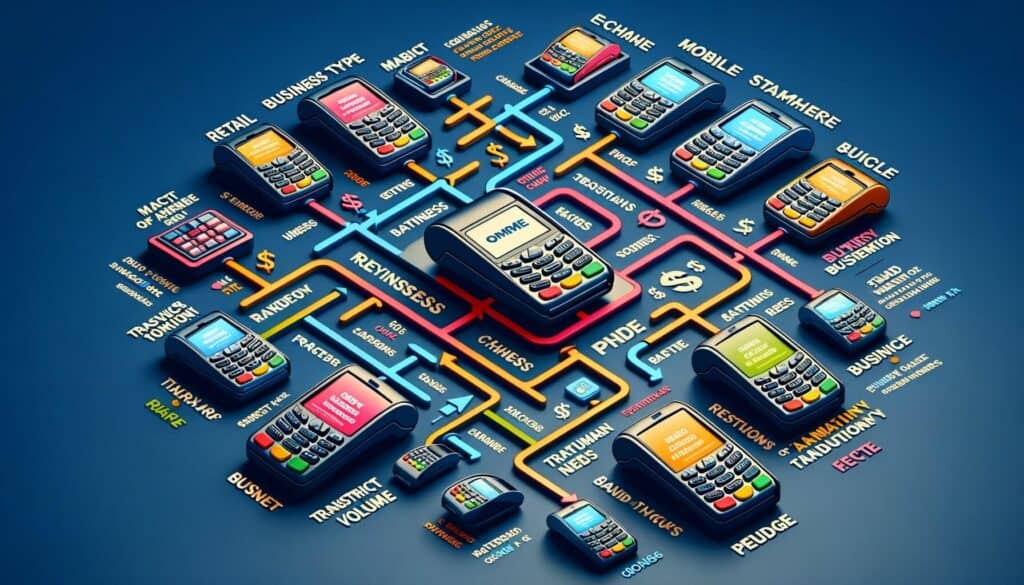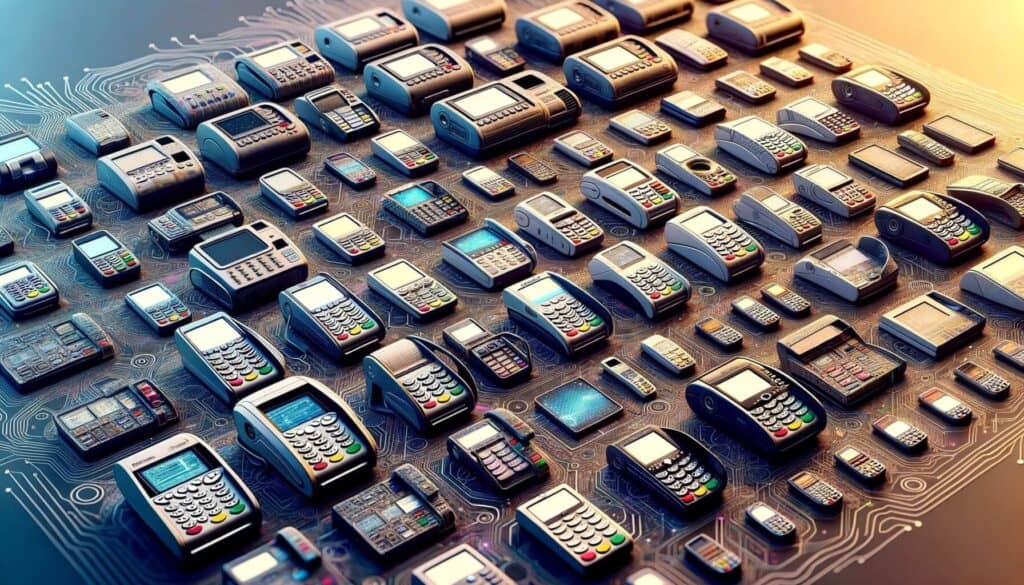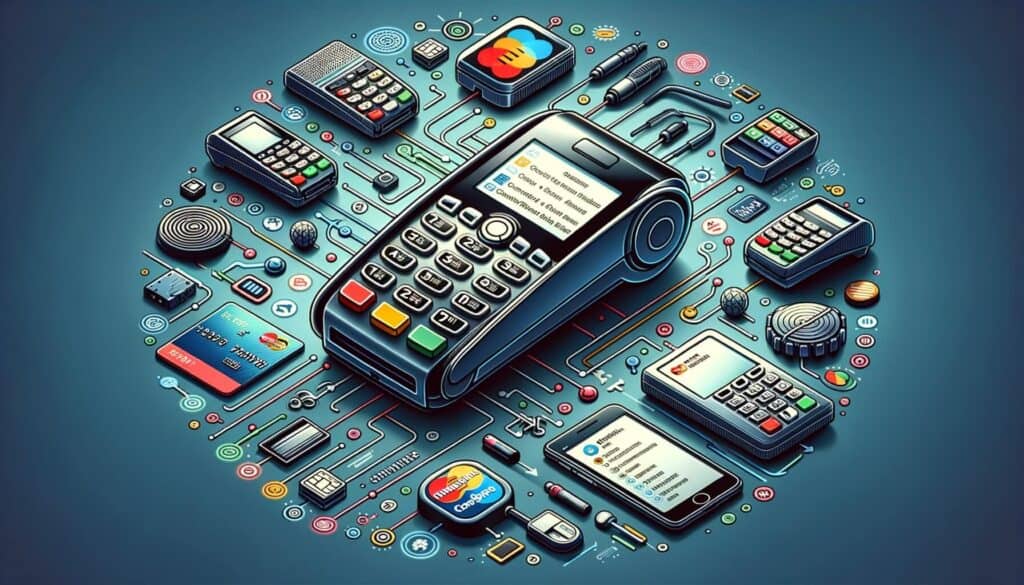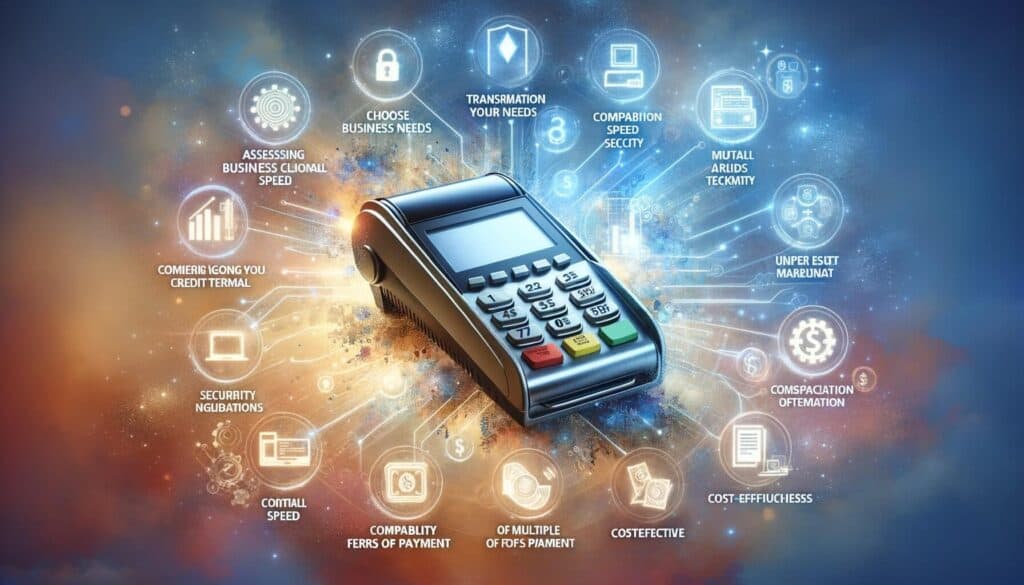
By Amanda Hoglund February 20, 2025
In today’s digital age, accepting credit card payments is essential for businesses of all sizes. Whether you run a small retail store or a large e-commerce platform, having a reliable and efficient credit card terminal is crucial for smooth transactions and customer satisfaction. However, with a wide range of options available in the market, choosing the right credit card terminal for your business model can be a daunting task.
This comprehensive guide will walk you through the factors to consider, types of credit card terminals, key features to look for, assessing your business needs, understanding payment processing, comparing different providers, and setting up and installing your credit card terminal.
Factors to Consider When Choosing a Credit Card Terminal for Your Business Model

When selecting a credit card terminal, it’s important to consider several factors that align with your business model. The first factor to consider is the type of business you operate. For instance, if you have a brick-and-mortar store, you may need a countertop terminal that can be easily integrated with your point-of-sale (POS) system. On the other hand, if you run a mobile business or attend trade shows, a wireless or mobile credit card terminal would be more suitable.
Another crucial factor to consider is the volume of transactions your business processes. If you have a high volume of transactions, you may need a credit card terminal that can handle a large number of transactions per minute. Additionally, considering the average transaction value is important, as some terminals may have limitations on the maximum transaction amount they can process.
Security is also a critical factor to consider when choosing a credit card terminal. Look for terminals that comply with Payment Card Industry Data Security Standard (PCI DSS) requirements to ensure the protection of sensitive customer information. Additionally, consider terminals that offer encryption and tokenization features to further enhance security.
Types of Credit Card Terminals: Exploring the Options Available

There are several types of credit card terminals available in the market, each catering to different business needs. The most common types include countertop terminals, wireless terminals, mobile terminals, and virtual terminals.
Countertop terminals are the traditional credit card terminals that are typically placed on a counter or desk. They are connected to a phone line or internet connection and are suitable for businesses with a fixed location. Wireless terminals, on the other hand, offer more flexibility as they can be used anywhere within the range of a wireless network. They are ideal for businesses that require mobility, such as restaurants with tableside payments or businesses that attend trade shows.
Mobile terminals are specifically designed for businesses on the go. They connect to a smartphone or tablet via Bluetooth or a mobile app, allowing businesses to accept payments anywhere with a cellular or Wi-Fi connection. Virtual terminals, also known as online payment gateways, enable businesses to accept credit card payments through their website. They are suitable for e-commerce businesses that operate solely online.
Key Features to Look for in a Credit Card Terminal

When choosing a credit card terminal, it’s important to consider the key features that will enhance your business operations. One of the essential features to look for is compatibility with your existing POS system. Ensure that the credit card terminal can seamlessly integrate with your POS software to streamline the payment process and avoid any compatibility issues.
Another important feature to consider is the connectivity options of the credit card terminal. Look for terminals that offer multiple connectivity options, such as Ethernet, Wi-Fi, and 3G/4G, to ensure uninterrupted payment processing. This is particularly important for businesses that operate in areas with unreliable internet connections.
Ease of use is another crucial feature to consider. Look for terminals with user-friendly interfaces and intuitive navigation to minimize training time for your staff. Additionally, consider terminals that offer customizable settings and shortcuts to tailor the user experience to your specific business needs.
Assessing Your Business Needs: Determining the Ideal Credit Card Terminal

To determine the ideal credit card terminal for your business, it’s important to assess your specific needs and requirements. Start by evaluating the volume and type of transactions your business processes on a daily basis. If you have a high volume of transactions, you may need a terminal with a fast processing speed and the ability to handle multiple transactions simultaneously.
Consider the average transaction value as well. If your business primarily deals with high-value transactions, you may need a terminal that can process larger transaction amounts without limitations. On the other hand, if your business primarily deals with small-value transactions, a terminal with a lower processing fee per transaction may be more cost-effective.
Consider the nature of your business as well. If you have a physical store, assess the available counter space and connectivity options. If you have limited counter space, a compact countertop terminal may be more suitable. If you have a mobile or online business, consider the portability and compatibility of the terminal with your existing devices.
Understanding Payment Processing: How Credit Card Terminals Work
To make an informed decision when choosing a credit card terminal, it’s important to understand how payment processing works. When a customer makes a purchase using a credit card, the credit card terminal communicates with the payment processor to authorize and process the transaction.
The credit card terminal captures the customer’s credit card information, including the card number, expiration date, and CVV code. It encrypts this information to ensure its security during transmission. The terminal then sends the encrypted data to the payment processor, which verifies the card details and checks for available funds.
Once the payment processor approves the transaction, the funds are transferred from the customer’s credit card account to the merchant’s account. The credit card terminal then prints a receipt for the customer and completes the transaction.
Comparing Different Credit Card Terminal Providers: Pros and Cons
When choosing a credit card terminal, it’s important to compare different providers to find the one that best suits your business needs. Here are some pros and cons of popular credit card terminal providers:
1. Square: Square offers a range of credit card terminals, including countertop, wireless, and mobile options. They are known for their user-friendly interfaces and affordable pricing. However, Square’s payment processing fees may be higher compared to other providers, especially for high-volume businesses.
2. PayPal: PayPal offers a virtual terminal that allows businesses to accept credit card payments online. They are known for their strong security measures and seamless integration with e-commerce platforms. However, PayPal’s fees may be higher for international transactions, and some businesses may find their customer support lacking.
3. Clover: Clover offers a variety of credit card terminals, including countertop, wireless, and mobile options. They are known for their advanced features, such as inventory management and customer loyalty programs. However, Clover’s terminals may be more expensive compared to other providers, and some businesses may find their software complex to navigate.
4. Shopify: Shopify offers a virtual terminal that integrates with their e-commerce platform. They are known for their user-friendly interface and comprehensive reporting features. However, Shopify’s transaction fees may be higher compared to other providers, especially for businesses with a high volume of transactions.
Setting Up and Installing Your Credit Card Terminal: A Step-by-Step Guide
Once you have chosen the right credit card terminal for your business, it’s time to set up and install it. Here is a step-by-step guide to help you through the process:
1. Unbox the credit card terminal and ensure that all the necessary components are included.
2. Connect the terminal to a power source using the provided power adapter.
3. If the terminal requires an internet connection, connect it to your router using an Ethernet cable or configure the Wi-Fi settings.
4. Follow the on-screen prompts to set up the terminal, including language selection, time zone, and date format.
5. If necessary, enter the merchant account information provided by your payment processor.
6. Test the terminal by processing a test transaction to ensure that it is functioning properly.
7. If applicable, configure any additional settings or features, such as tip options or receipt customization.
8. Train your staff on how to use the credit card terminal and troubleshoot common issues.
9. Regularly update the terminal’s software to ensure optimal performance and security.
Frequently Asked Questions (FAQs) about Credit Card Terminals
Q1. What is the difference between a credit card terminal and a payment gateway?
Answer: A credit card terminal is a physical device used to accept credit card payments, while a payment gateway is a software or service that enables businesses to accept credit card payments online.
Q2. Can I use my existing credit card terminal with a new payment processor?
Answer: In some cases, it may be possible to use your existing credit card terminal with a new payment processor. However, compatibility issues may arise, and it’s recommended to consult with the new payment processor for guidance.
Q3. How long does it take to set up a credit card terminal?
Answer: The setup time for a credit card terminal can vary depending on the complexity of the terminal and the availability of necessary information. In general, it can take anywhere from a few minutes to a few hours to set up a credit card terminal.
Q4. Can I accept contactless payments with a credit card terminal?
Answer: Many credit card terminals support contactless payments, such as Apple Pay and Google Pay. However, it’s important to ensure that your chosen terminal has this capability before making a purchase.
Q5. What should I do if my credit card terminal stops working?
Answer: If your credit card terminal stops working, first check the power source and connectivity. If the issue persists, contact your payment processor or the manufacturer of the terminal for troubleshooting assistance.
Conclusion
Choosing the right credit card terminal for your business model is crucial for seamless payment processing and customer satisfaction.
By considering factors such as your business type, transaction volume, and security requirements, you can narrow down the options and find a terminal that aligns with your specific needs. Understanding the different types of credit card terminals, key features to look for, and the payment processing workflow will further aid in making an informed decision.
By comparing different providers and following a step-by-step installation guide, you can set up your credit card terminal and start accepting payments with ease.